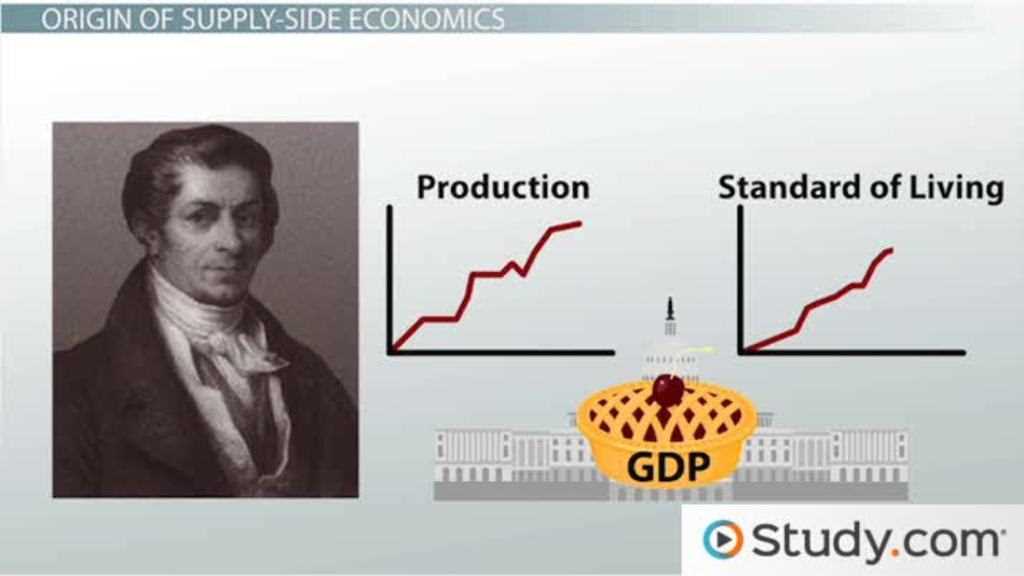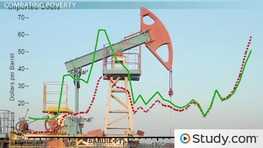What is Reaganomics?
Reaganomics refers to the economic policies implemented by President Ronald Reagan during his presidency in the 1980s. It is a combination of tax cuts, deregulation, and reduced government spending aimed at stimulating economic growth and reducing inflation.
The main principles of Reaganomics can be summarized as follows:
1. Tax cuts: Reagan believed that reducing tax rates would incentivize individuals and businesses to work harder, invest more, and stimulate economic growth. He implemented significant tax cuts, particularly for high-income individuals and corporations.
2. Deregulation: Reagan aimed to reduce government regulations on businesses, which he believed were stifling innovation and economic growth. He implemented policies to deregulate industries such as banking, telecommunications, and energy.
3. Reduced government spending: Reagan sought to reduce government spending, particularly on social welfare programs. He believed that excessive government spending was contributing to inflation and hindering economic growth. He implemented budget cuts and sought to limit the growth of government programs.
Reaganomics had both supporters and critics. Supporters argue that Reagan’s policies led to economic growth, job creation, and reduced inflation. They credit Reaganomics with revitalizing the American economy after a period of stagflation in the 1970s.
Critics, on the other hand, argue that Reaganomics primarily benefited the wealthy and contributed to income inequality. They contend that the tax cuts disproportionately favored the wealthy, while the reduction in government spending negatively impacted social welfare programs and disadvantaged low-income individuals.
Overall, Reaganomics remains a highly debated topic in economics and politics. Its impact on the economy and society continues to be analyzed and discussed, shaping discussions on government policies and economic ideologies.
The Policies of Reaganomics
Tax Cuts

One of the key components of Reaganomics was a series of tax cuts. Reagan believed that reducing tax rates would incentivize individuals and businesses to work harder and invest more, leading to increased economic activity. The top marginal tax rate was reduced from 70% to 28% during Reagan’s presidency.
Proponents of Reaganomics argue that these tax cuts stimulated economic growth and led to higher government revenues in the long run. Critics, however, argue that the tax cuts primarily benefited the wealthy and contributed to income inequality.
Deregulation
Another important aspect of Reaganomics was deregulation. Reagan believed that excessive government regulations stifled economic growth and innovation. His administration implemented a wide range of deregulatory measures, particularly in industries such as banking, telecommunications, and energy.
Proponents argue that deregulation allowed businesses to operate more efficiently and compete more effectively, leading to increased productivity and economic growth. Critics, on the other hand, argue that deregulation contributed to the financial crisis of 2008 and allowed for unethical business practices.
Reducing Government Spending

Reaganomics also aimed to reduce government spending. Reagan believed that a smaller government would lead to less bureaucracy and more efficient allocation of resources. His administration implemented spending cuts across various government programs, including social welfare programs.
Proponents argue that reducing government spending helped to reduce the budget deficit and stimulate economic growth. Critics, however, argue that these spending cuts disproportionately affected the most vulnerable members of society and led to increased poverty and inequality.
The Impact of Reaganomics
Reaganomics, the economic policies implemented by President Ronald Reagan in the 1980s, had a significant impact on the United States economy. These policies aimed to reduce government intervention and promote free-market capitalism.
Reaganomics also had an impact on the federal budget and national debt. While Reagan aimed to reduce government spending, his policies ultimately led to an increase in the federal budget deficit. The combination of tax cuts and increased defense spending resulted in a significant increase in the national debt. Critics argue that this was a negative consequence of Reaganomics, as it burdened future generations with debt.
Additionally, Reaganomics had an impact on income inequality. While the policies aimed to stimulate economic growth and benefit all Americans, they also led to an increase in income inequality. The tax cuts primarily benefited the wealthy, while the working class saw slower wage growth. This has been a subject of debate and criticism of Reaganomics.
Reaganomics and Government & Policy
Another aspect of Reaganomics was a focus on deregulation. Reagan believed that excessive government regulations stifled economic growth and innovation. He aimed to reduce government intervention in industries such as banking, telecommunications, and energy, allowing market forces to drive competition and efficiency.
Reagan also pursued a policy of tight monetary control, with the goal of reducing inflation. His administration worked closely with the Federal Reserve to implement monetary policies that would stabilize prices and promote economic stability.
The impact of Reaganomics on the economy was mixed. Proponents argue that the policies led to a period of sustained economic growth, reduced inflation, and increased job creation. They point to the expansion of industries such as technology and finance as evidence of the success of Reagan’s free-market approach.
However, critics argue that Reaganomics primarily benefited the wealthy and exacerbated income inequality. They point to the growing national debt during Reagan’s presidency as evidence that the tax cuts disproportionately favored the rich. Additionally, some argue that deregulation contributed to financial instability, culminating in the 2008 financial crisis.

Emily Bibb simplifies finance through bestselling books and articles, bridging complex concepts for everyday understanding. Engaging audiences via social media, she shares insights for financial success. Active in seminars and philanthropy, Bibb aims to create a more financially informed society, driven by her passion for empowering others.
